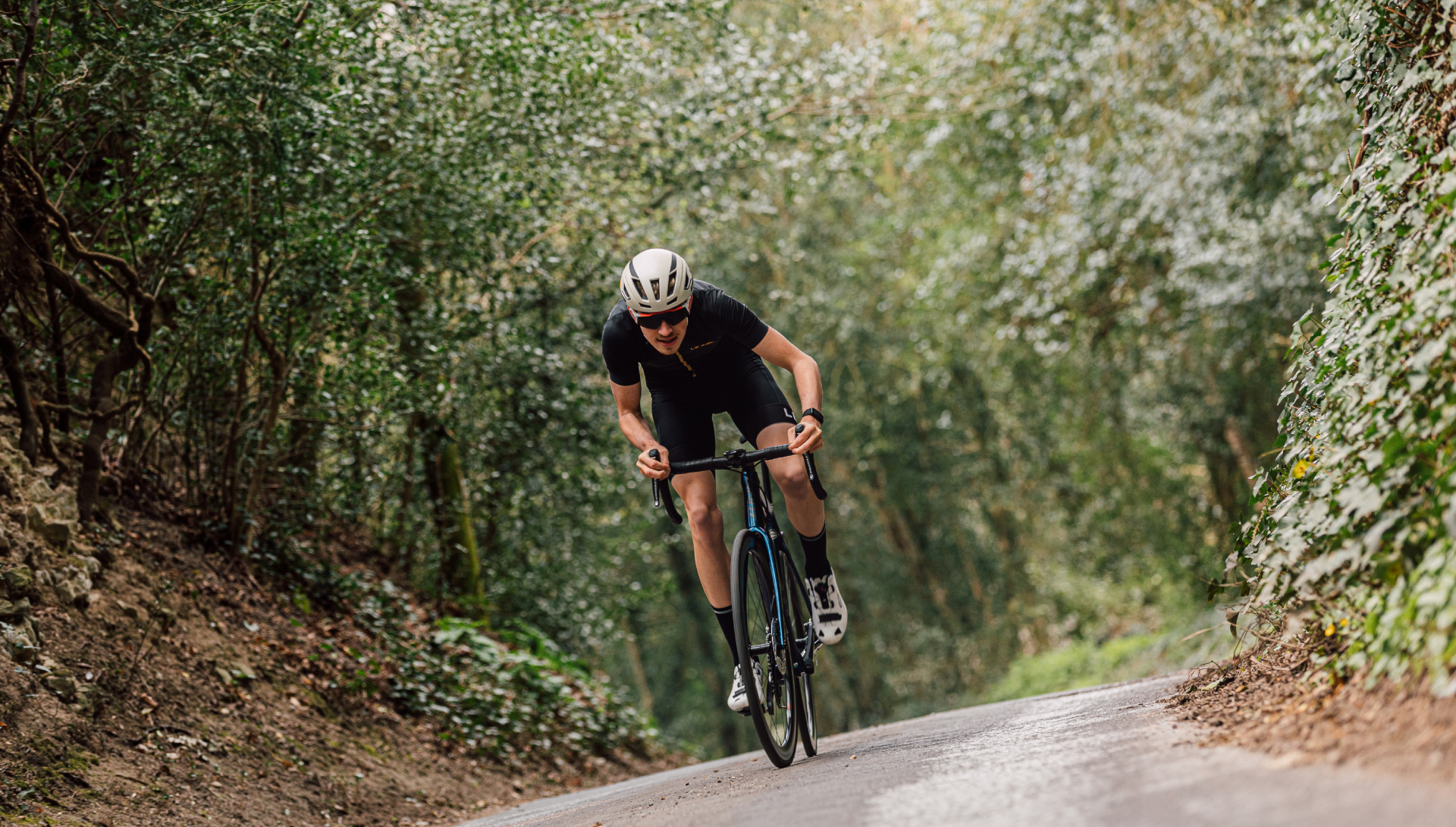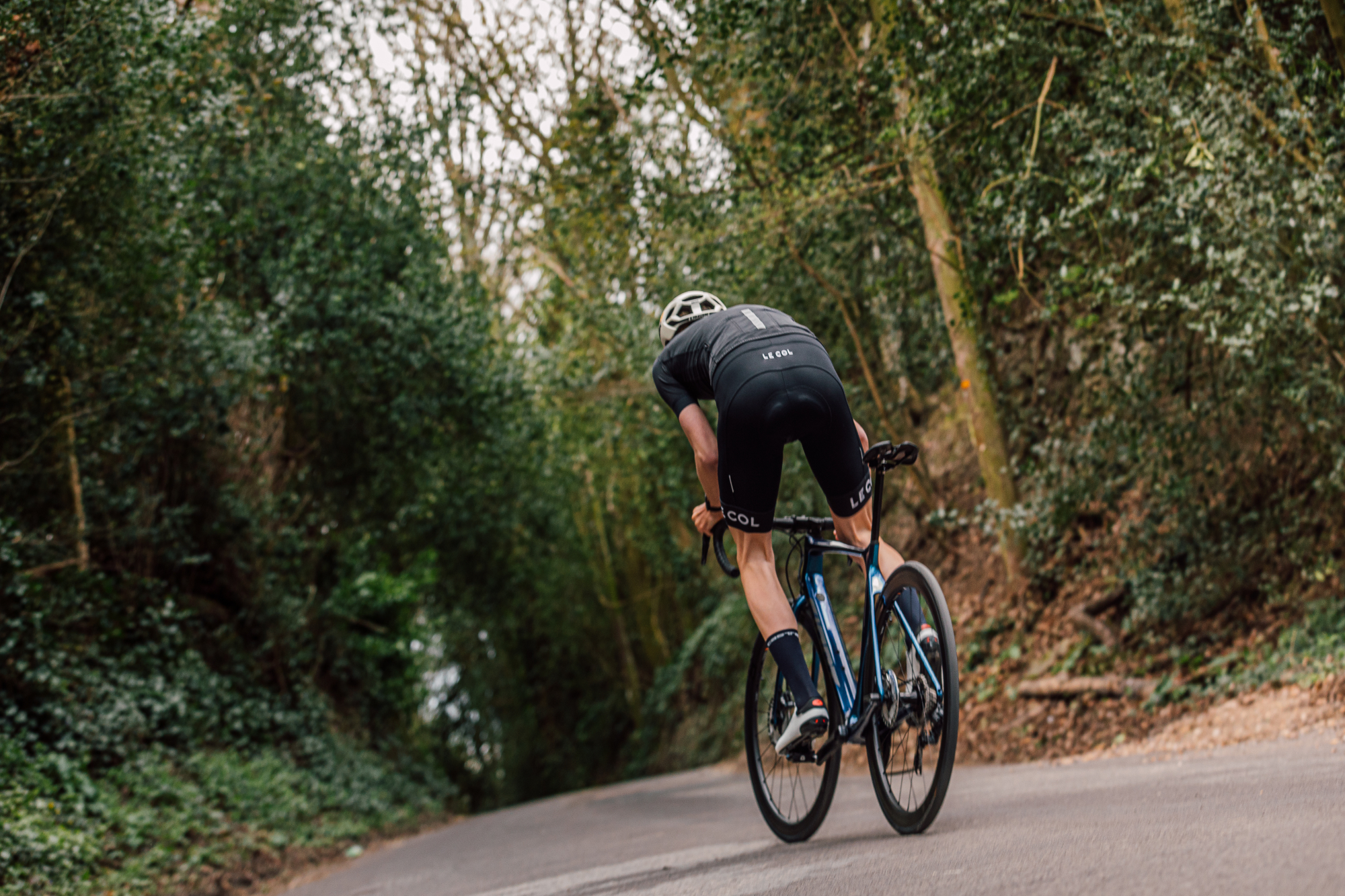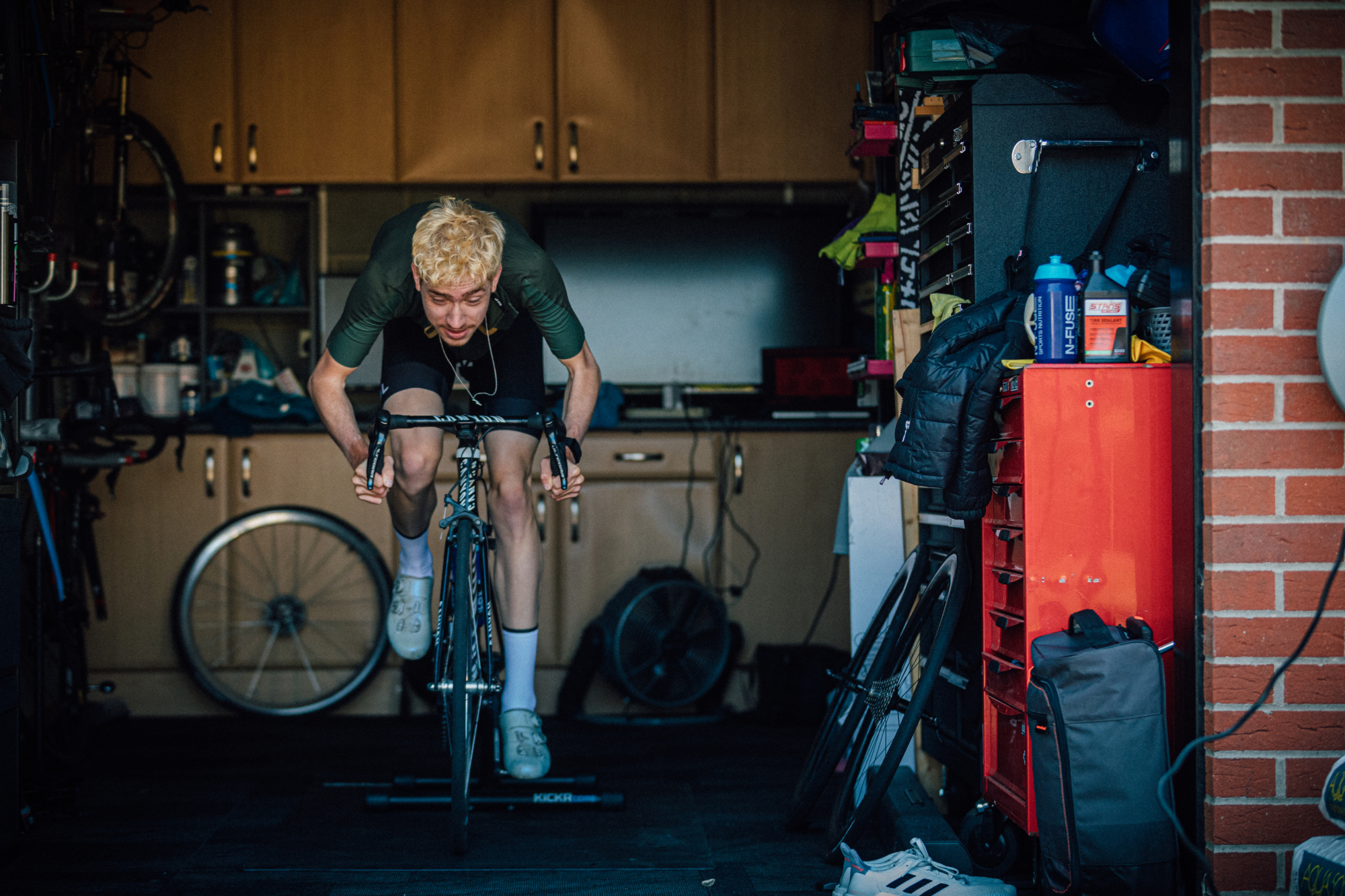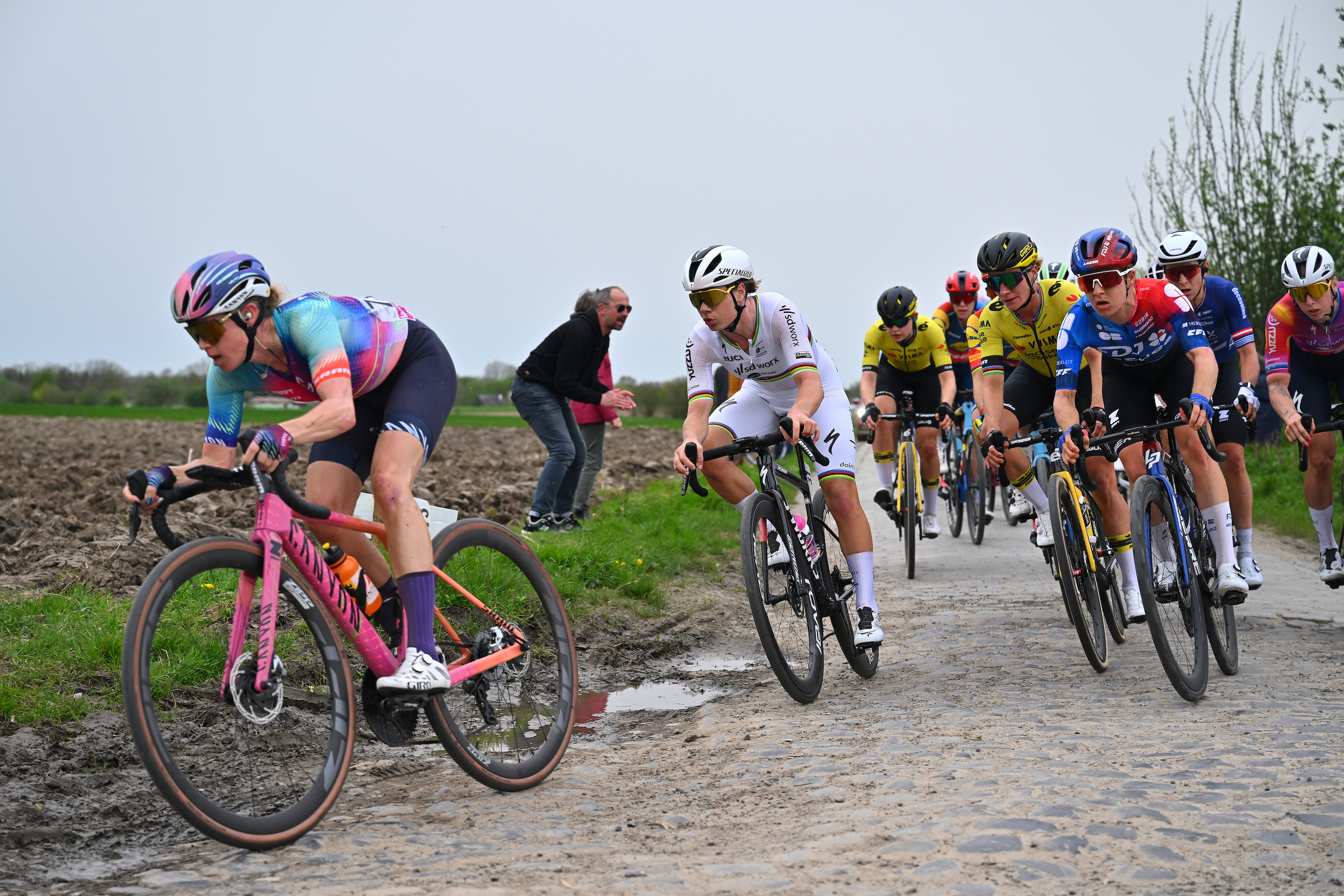VO2 max for cyclists: What is VO2 max? How does mine compare and how can I improve?
Defining your 'aerobic ceiling', VO2 max is a crucial fitness benchmark - here’s what you need to know and how to improve yours

One of the riders I coach, Rebecca, messaged me recently after getting home from an endurance ride. She wanted to discuss which higher-intensity workouts would be best for getting her ready for the race season.
“I’ve read that a rider’s VO2 max is hereditary and that you don’t really need to specifically train it,” said Rebecca. “Apparently you can do all the hard efforts you need in races and group rides.”
In fact, Rebecca was full of questions on VO2 max training: the importance of being able to repeat the efforts; how much top-end training is needed in the lead-up to a race; as well as the volume and frequency of this maximal type of work. It got me thinking: this is an area of training that really can make or break a rider’s season, and they need to get it right – Rebecca’s queries had inspired me to revisit the subject and to provide a thorough guide.
What is VO2 max?

VO2 max, also known as maximal oxygen uptake, is the measurement of a person’s maximum rate of oxygen consumption during intense exercise, i.e. volume of oxygen per kilo of bodyweight per minute. It is used to establish an athlete’s aerobic capacity, usually for training purposes. Though VO2 max is most accurately determined by lab tests, many athletes rely on algorithm-based products such as WKO5, or estimations based on power test data. The highest human VO2 max values on record exceed 90ml/kg/min, while male pro riders usually measure in the mid-70s to high-80s and female pros in the 60-70ml/kg/min range. A good amateur rider typically has a VO2 max in the mid-60s to low-80s.
There are many factors that influence VO2 max, including age, gender, elevation and training history. The body works as an entire system to transport oxygen from the lungs to the mitochondria in the muscles, to produce the energy that you need to push the pedals.
While the genetic aspect mentioned by Rebecca does put a ceiling on VO2 max for optimally trained professionals who have been riding for years, most amateurs and weekend warriors have plenty of room for improvement. For most riders, in fact, VO2 max work is fundamental to improving racing performance.
The better each component part of the VO2 max system works, the better the athlete will perform. The main determinants are cardiac output, stroke volume (how much blood the heart pumps with each beat), capillary density, the blood’s oxygen-carrying capacity, and the amount of mitochondria in the cells. If we think of the aerobic system as an engine, these factors together determine the size of the combustion chamber – more revs, more fuel, it won’t make a difference if your engine isn’t big enough.
Get The Leadout Newsletter
The latest race content, interviews, features, reviews and expert buying guides, direct to your inbox!
“Power on the bike can be produced in two ways, aerobically – with oxygen – and anaerobically – without oxygen,” explains Pablo Cruz, head coach at PC Endurance.
“The higher an athlete’s VO2 max, the greater their ability to produce a higher power output aerobically, which is more efficient and more sustainable over long periods of time than anaerobic power – which is why VO2 max is so important to cycling.”
Although VO2 max refers to maximal uptake, even endurance riding affects VO2 max performance – steady pace riding helps develop some of the determinants listed above. This means that you can improve some aspects of the VO2 max system even when you are taking it easy on the bike. It’s not all about gritting your teeth and pushing hard constantly.
What is VO2 max intensity?
To put it simply, VO2 max intensity is very hard – so hard that you literally cannot sustain it for any longer than seven minutes or 10 at most.
During these efforts, you will be panting for air, to the extent that there is absolutely no way you’re having any type of conversation. If we’re talking training zones, this is Zone 5 – your heart rate should be at 90-100 per cent of max, and your power at 106-120 per cent of FTP. In terms of race application, VO2 max is the effort level you will hit when you’re trying to drop someone or make a sustained surge.
Now for the hard work… How do you make VO2 max intervals part of your training calendar? And how many VO2 max cycling workouts will it take to be able to start dropping your friends on group rides? Top-flight Zwift racer Alex Sankovic focused on VO2 max training to make the step up to the Enshored p/b PedalPower Zwift elite squad. “Like most road racers, when Covid hit, I fled onto Zwift and got my teeth kicked in for months,” says the Slovenian. “That was until I made my training more specific and tailored efforts towards race demands. In 12 months, I gained 55w on my three-minute VO2 max power and managed to place in the top 10 in the Zwift Racing League EMEA division.”
The top-end work yielded spectacular results for Sankovic – he’s racing at a higher level than ever before. “Those results earned me a spot on the pro roster of our team,” he continues, “and I got selected for the Premier Division’s season three.” What type of VO2 max session does he favor? “My favorite workout is a classic seven times three-minute effort, with three minutes between, as well as tempo rides with bursts of VO2 max.”
What is a VO2 max workout?

The classic, and quite extreme, VO2 max indoor cycling session was five by five minutes – go all-out for five minutes, paced on feel, finishing each one feeling absolutely roasted. Before training with power meters, that’s all we had to work with. Thankfully things have moved on a bit – thanks to the accuracy of the best power meters, we can easily work strictly within 106-120 per cent of FTP.
Classic VO2 max intervals tend to fall in the three- to seven-minute range, racking up a total 15-25 minutes of VO2 max zone work in total for each session. Be warned, though: if you haven’t trained VO2 max before, the first few of these sessions you attempt might be tough to finish. In fact, they will always hurt, but your mental capacity to tolerate your body screaming at you does improve with practice.
My advice is, never do more than two VO2 max workouts per week. They are extremely fatiguing, both physically and mentally. If you find yourself feeling a little anxious on the morning of the workout, that is normal – these sessions provoke nerves, not unlike a race. Don’t overthink it or stress about it, though. Just get ready for your ride and know that it is going to be uncomfortable. Be confident you know what to do and that you will emerge on the other side as a stronger, fitter, faster cyclist.
If you ever feel stale from doing too much tempo or threshold work, VO2 max intensity is a great fitness plateau-buster. The new stimulus from a few hard sessions really wakes up the body. If you decide to go this route to change things up, remove the tempo and threshold work and substitute in the VO2 max sessions – don’t do all four sessions in one week, as VO2 max is just too taxing on the body and demands at least one day of easy recovery riding before and afterwards. Being fresh allows you to go hard enough to achieve genuine VO2 max – well above FTP – to put the system under enough stress that the body is prompted to adapt during the rest period that follows.
Once you come out of your base period, it’s a good idea to do VO2 max workouts once or twice a week from about eight weeks out from your big event, easing up on them as the big day approaches. However, this is not a precise prescription – everyone responds differently to this type of training. When in doubt, less is more. If you haven’t trained at VO2 max before, start with one session per week, no more than 15 minutes total at Zone 5. These sessions should give you confidence and make you feel hungry to push yourself. If you start feeling stale after VO2 max sessions, give them a break for a week or two.
For a specific block of VO2 max training, if your normal training block is three weeks long, you could line up four to six VO2 max sessions over those three weeks – that would be plenty. The rest of your riding should be at recovery pace (as described above) and endurance pace on the weekends. Anyone new to VO2 max workouts should take a break after three weeks of these sessions.
How to fuel for VO2 max workouts
As mentioned above, VO2 max training sessions are extremely intense and so your approach to your cycling nutrition needs to align with these demands. While you can fuel low-intensity sessions (40-60 per cent of FTP) on mostly fat metabolism, at VO2 max you’re burning carbs almost exclusively. To train at this level of intensity, you need to be fully fuelled, so make sure you carb-load your dinner the night before. In the morning, instead of eggs and bacon, go for porridge with fruit and honey. VO2 max training, as with any training above 60 per cent of FTP, should never be done in as a fasted ride. The body is not equipped to handle that stress without fuel. The more fuel, the more watts, the harder you can ride, and the more benefit you will reap from that session!
Now for training location… Controlled environment on the trainer or out in the wild outdoors? You’ll hear a lot of athletes talk about doing VO2 max sessions on their local climbs because when they’re going that deep, it helps to visualise chasing after someone or trying to go off the front at a peak part of a race. This is also beneficial if your events will be outdoors; there is nothing better than executing a training session on the same roads you’ll be racing on.
That said, if you have an extremely well-dialled indoor cycling set-up – a powerful fan, and enough ventilation to keep the temperature down – you can crank out VO2 max intervals very effectively indoors. Try both, indoors and out, and see which works best for you.
Why is VO2 max training important?
National champion mountain-biker Tom Bell and road cycling coach of High North, says:
“Targeted VO2max training is important for improving power production and fatigue resistance – both key performance factors in most cycling disciplines. A higher VO2max means you can contribute more power aerobically during sustained but intense efforts, for example, a breakaway effort in a road race.
“Crucially, a higher VO2max also means a greater capacity for clearing anaerobic by-products. This is really important in any races demanding lots of high-power surges and sudden intensity changes. As an endurance athlete, being able to go harder for longer, repeating these efforts over and over again, is a huge part of being race-fit.”
VO2 max work will train you to be able to make the break, deal with racing surges, or just to beat your friends up that five-minute climb; it is an essential component in optimising your aerobic fitness. Just remember, these sessions are very fatiguing, so you need to place them in the right spot on your training calendar – not too frequently scheduled and not too close to a big event.
There is no single best way to train the VO2 max system – as long as you are going at the right intensity for a prolonged period of time, you’re doing it right! Make sure to recover well from every VO2 max session, and push just slightly harder next time. Get the rest and recovery balance right and you’ll soon be reaping the rewards.
Six VO2 max workouts

Aspiring pro Callum McQueen details his favored approach to VO2 max training:
"My typical VO2max range is 370-420 watts, and I’d usually introduce this type of work into my training early in the season – slightly different this year, for obvious reasons.
Most, if not all, VO2 sessions are horrendous! My ‘favorite’ way of getting this work done is by throwing the following efforts into a three-hour ride:
- 7x (1min on, 1min off) – in the first hour
- 4x 3min – in the middle hour
- 3x 4min – in the final hour
Doing these efforts within a long ride mimics the back end of a race. Of course, there are times when VO2 max work needs to be done on fresh legs too."
Here are some others to get stuck into...
Classic 3min Hard Starts
- 6x 3min @ Z5
- Recovery between efforts: 3min @ Z1, starting all-out before settling into the effort
- How many? Start with four (12 minutes total) and work up to eight (24 minutes total)
Make The Break
- 1x (30s @ 140% FTP, 2min @ 100%, 30sec @ 140%, 2min @ 100%, 2min @ 106%, 2min @ 100%)
- No recovery!
VO2max via Threshold Bursts
- 4x (5min @ 93-100% FTP with a 30sec surge @ 125-135% FTP every 1min)
- Recovery between efforts: 4min @ Z1
- How many? Start with three (15 minutes total) and work up to five (25 minutes total)
Hard Finish
- 5x (2min @ 105-115% FTP, 2min all-out)
- Recovery between efforts: 3min @ Z1
- How many? Start with three (12 minutes total) and work up to six (24 minutes total)
Classic 5x5
- 5x 5min @ 110-120% FTP
- Recovery between efforts: 3min @ Z1
If you're looking to follow a ready-made session on an indoor training app, in our guide to the best workouts and training plans on Zwift we cover the best VO2 max workout on Zwift.

Thank you for reading 20 articles this month* Join now for unlimited access
Enjoy your first month for just £1 / $1 / €1
*Read 5 free articles per month without a subscription

Join now for unlimited access
Try first month for just £1 / $1 / €1
Brendan Housler of evoq.bike is a cat-one cyclist and professional cycling coach from the USA.
-
 How to watch Paris-Roubaix and Paris-Roubaix Femmes 2025: Everything you need to live stream the Hell of the North
How to watch Paris-Roubaix and Paris-Roubaix Femmes 2025: Everything you need to live stream the Hell of the NorthAll the details on broadcasters for Paris-Roubaix so you can watch Tadej Pogačar and Mathieu van der Poel in one of the biggest cycling races on April 13.
By Adam Becket Published
-
 Zefal Supervision R150 rear bike light
Zefal Supervision R150 rear bike lightA versatile and bright rear LED light that offers good visibility to other road users day or night
By Hannah Bussey Published